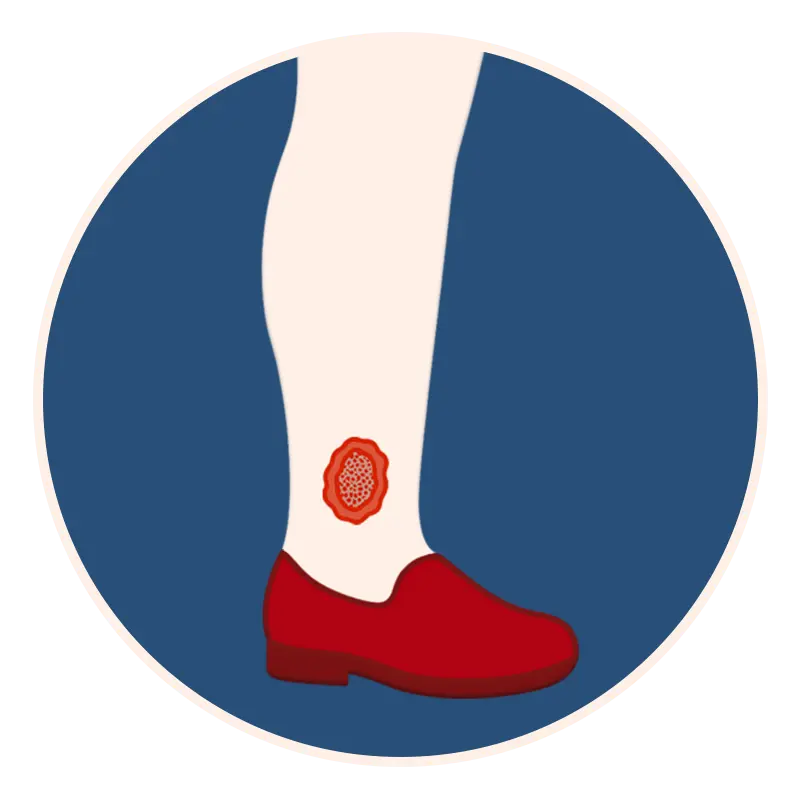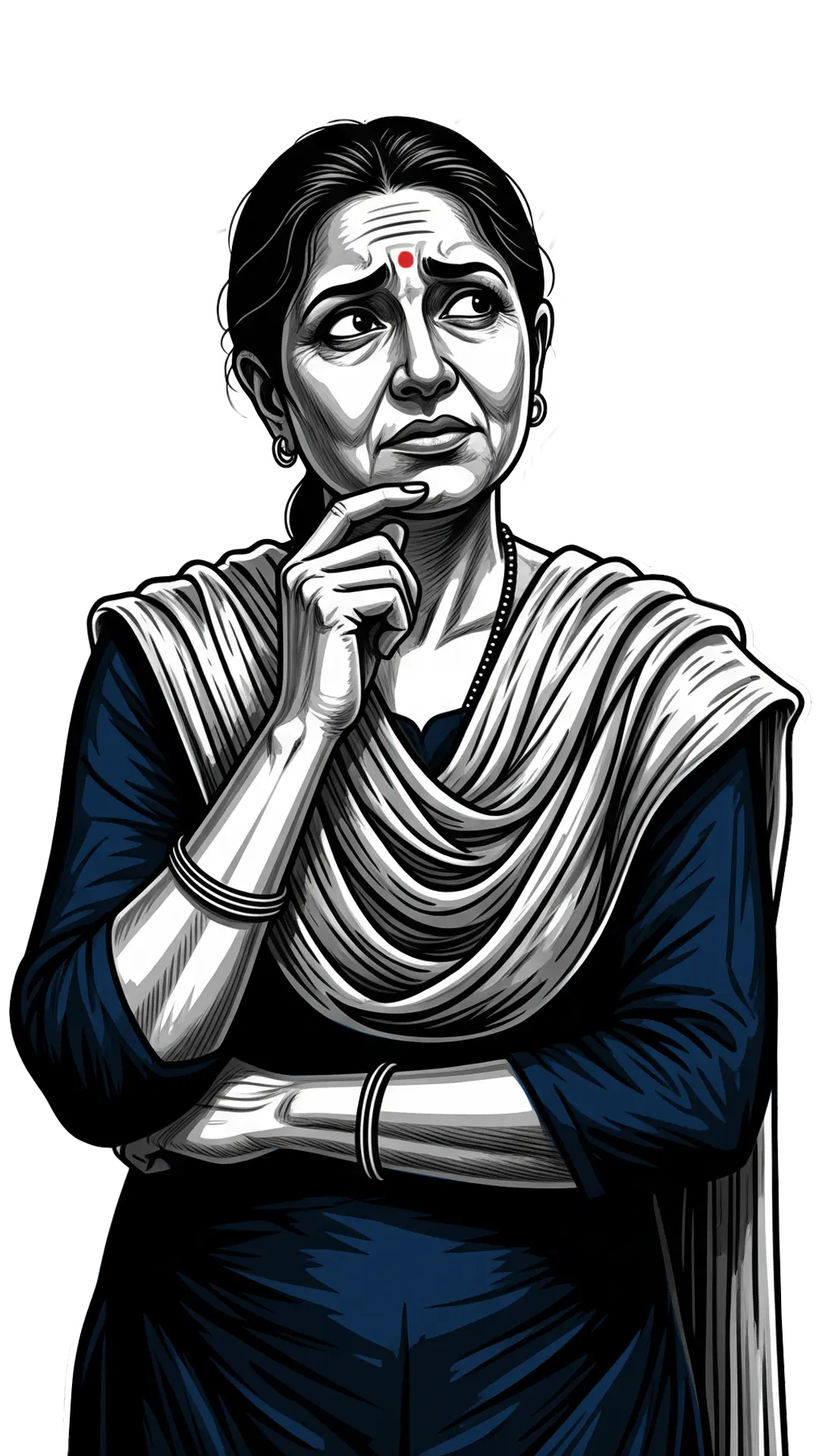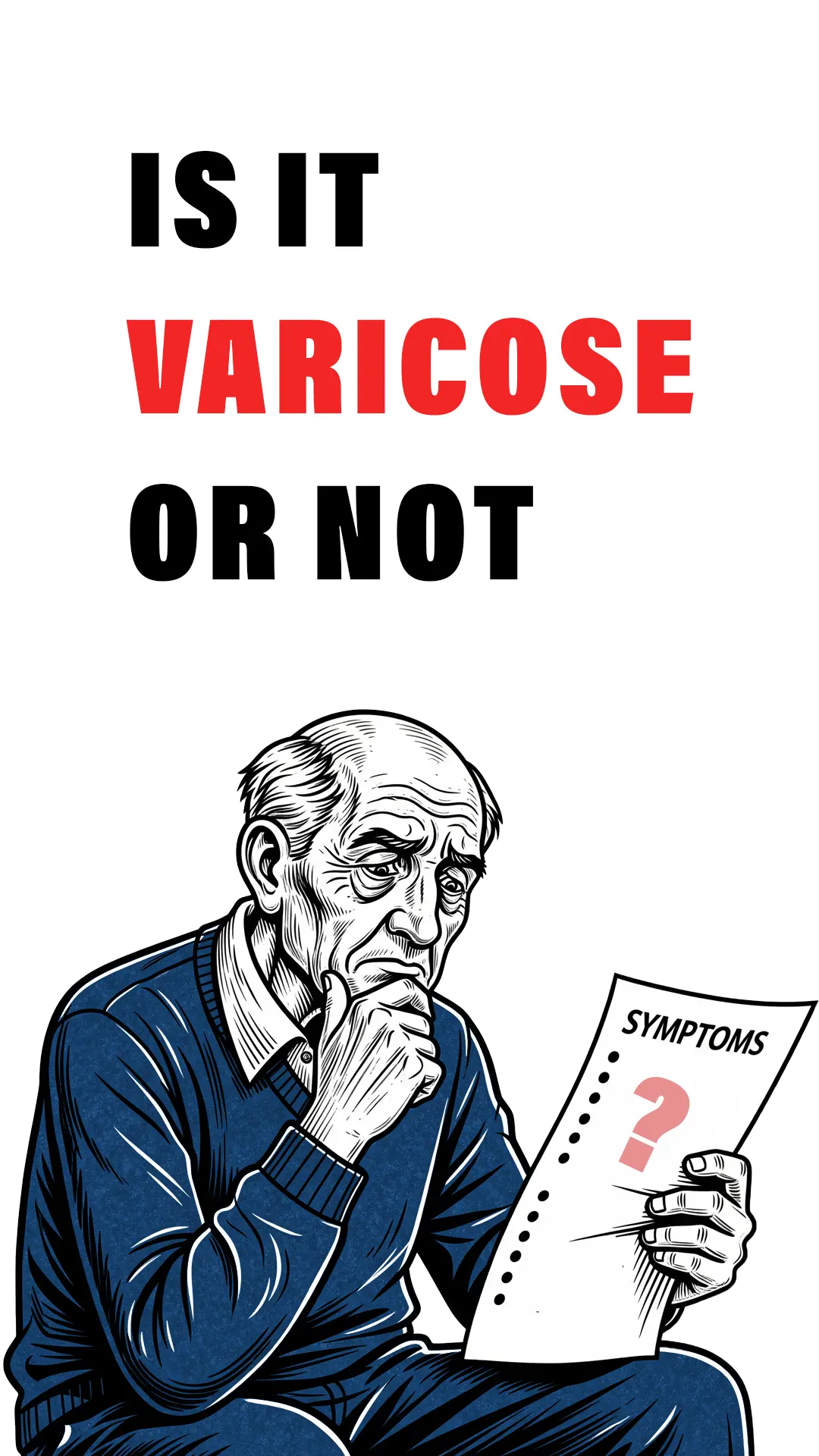Looking for The Best
Venous Ulcers Treatment in Mumbai?

Zindagi Me Khushi
“Zindagi Me Khushi” is our heartfelt initiative to celebrate the happiness we’ve had the privilege to bring into people’s lives.
Yes, we are surgeons. Yes, we perform procedures. But what truly matters is the difference we make in people’s lives.
Dr. Saurabh Joshi with Patients
About Venous Ulcers
Venous ulcers, also known as venous stasis ulcers or varicose ulcers, are open sores that typically occur on the lower legs, particularly around the ankles. They are the most severe complication of chronic venous insufficiency (CVI), a condition where the veins in the legs do not efficiently return blood to the heart. This leads to increased pressure in the veins, causing fluid to leak into the surrounding tissue, which can break down the skin and result in ulcers.
Venous ulcers are often painful and slow to heal due to poor circulation. They can be triggered by minor injuries or even appear spontaneously. Symptoms include swelling, itching, and discolored skin around the ulcer site. Proper treatment is crucial to prevent infection and further complications. Treatment usually involves compression therapy, wound care, and addressing the underlying venous insufficiency through procedures like minimally invasive ones, or surgery. Without treatment, venous ulcers can become chronic and severely impact quality of life.
Causes of Venous Ulcers
Venous Ulcers are caused by a number of factors, including:
Chronic Venous Insufficiency (CVI): The valves in the leg veins become weak or damaged, causing blood to pool in the lower legs instead of flowing back up to the heart. This increased pressure (venous hypertension) damages the skin and underlying tissues, leading to ulcer formation.
Deep Vein Thrombosis (DVT): A history of blood clots in the deep veins can damage the valves, worsening venous return and contributing to ulcer development.
Varicose Veins: Enlarged, twisted veins caused by valve failure can lead to increased pressure in the veins, contributing to tissue breakdown and ulcers.
Prolonged Immobility or Standing: Lack of movement impairs venous return, causing blood pooling in the legs.
Pregnancy: Can temporarily increase vein pressure, especially with multiple pregnancies.
Obesity: Increases pressure on leg veins and worsens venous insufficiency.
Older Age: Veins lose elasticity and valve function with age, increasing the risk.
Previous Leg Injuries or Surgeries: Can damage veins or impair circulation, predisposing to ulcers.

Stages of Venous Ulcers
Venous ulcers progress through several stages, each characterized by specific symptoms and skin changes. Understanding these stages can help in early detection and appropriate treatment:
Stage 1
Pre-Ulcer Stage (Skin Changes)
Symptoms: The skin around the ankles and lower legs starts to change, often becoming discolored (brownish or reddish).
Signs: The skin may thicken, harden (lipodermatosclerosis), and become itchy or dry. Swelling may be present, especially after standing or sitting for long periods.
Stage 2
Early Ulcer Stage
Symptoms: A small, shallow sore appears, usually where the skin is most discolored.
Signs: The ulcer is typically painless initially but may start to become uncomfortable as it progresses. The sore has irregular edges and is often surrounded by inflamed skin.
Stage 3
Established Ulcer Stage
Symptoms: The ulcer grows larger and deeper, and pain may increase, especially if the ulcer becomes infected.
Signs: The ulcer remains open and shows little signs of healing. There is often a discharge, and the skin around the ulcer may be swollen, red, and warm to the touch.
Stage 4
Chronic Ulcer Stage
Symptoms: The ulcer becomes chronic, persisting for weeks to months without proper treatment. Pain is often significant, and the risk of infection is high.
Signs: The ulcer can become more extensive, with thickened edges and significant surrounding skin changes. The area is prone to repeated infections and may produce a foul-smelling discharge.
Symptoms of Venous Ulcers
The following are some of the common symptoms of venous ulcers:
Open Wound or Sore: Usually shallow with irregular edges. Located mostly on the inner part of the leg, near the ankle. May be wet or weeping with yellowish or greenish discharge
Swelling (Edema): Persistent swelling of the lower leg or ankle due to fluid buildup. Worsens with standing or prolonged sitting.
Pain or Discomfort: Ranges from mild aching to severe pain. Pain often worsens when the leg is lowered and improves with elevation.
Skin Changes Around the Ulcer: Skin may become hardened (lipodermatosclerosis) or discolored (brownish or reddish from hemosiderin staining). Itching, flaking, or eczema-like symptoms may appear.
Varicose Veins: Visible, twisted veins may be present nearby
Foul Smell or Pus (Infection Signs): May indicate a secondary bacterial infection. Can be accompanied by redness, warmth, or fever.
Delayed Healing: The ulcer may persist for weeks or even months without treatment.
Skin Sensitivity or Burning: Surrounding skin may be sensitive or irritated.

Treatments of Venous Ulcers
The Vein Center has a long history of successfully treating varicose veins and Venous Ulcers, and its medical professionals are highly skilled in identifying the most appropriate treatment option for each patient’s individual needs. We have an extensive experience in treating varicose veins and venous ulcers using a range of techniques, including endo venous laser ablation and vein stripping. We are always looking to most advanced and effective treatment options for our beloved patients. Check our evolution in terms of venous ulcers treatment below and find out why we are Introducing and promoting VenaSeal treatment.

Endo Venous Laser Ablation
From 2012 to 2018, we have opted the Endo Venous Laser Ablation procedure to treat Varicose Veins and venous ulcers. We have successfully treated thousands atients with Laser procedures. Due to the nature Laser Ablation which is thermal, there were many cases of recurrent Varicose Veins and Venous Ulcers. Later we have treated all of them successfully with VenaSeal procedure. Currently we recommend all of our patients to choose VenaSeal over LASER.
- Multiple Pricks
- Stockings Needed
- Recovery in Days
- Sedation Needed
- Minimally Invasive but Thermal
- More Recurrence Chances

VenaSeal Closure System
From 2018 to present we are treating the Venous Ulcers patients with VenaSeal Closure System procedures. Compared to Laser Ablation we can openly say that “VenaSeal is the Most Modern and Effective treatment for Varicose Veins and Venous Ulcers in the current time”. We have received many appreciation and recognition at International level for the innovative and self made treatment protocols we developed with VenaSeal Closure System.
- Single Prick
- No Stockings Needed
- Recovery in Same Day
- No Sedation
- Minimally Invasive, Non-Thermal
- Less Recurrence Chances
Expert in Vascular Diseases
From humble beginnings to being one of Asia’s leading Venaseal treatment provider for Varicose Veins and Venous Ulcer, we’ve definitely come a long way and received international recognition by winning the most prestigious awards in 2018-19.
Winner of Prestigious Awards
College of Phlebology London Award
London, United Kingdom (2018)
Venartis Phlebology Innovation Award
Zurich, Switzerland (2018)
Medtronics Appreciation Award
Minnesota, USA (2024)
Dr. Saurabh Joshi
Vascular Surgeon & Interventional Radiologist (MBBS, MD, FNVIR, MBA)
Dr. Saurabh Joshi has extensive experience in the diagnosis and management of complex vascular diseases using the latest techniques and technologies. He has performed numerous minimally invasive procedures, including endo venous laser treatment, radiofrequency ablation, and sclerotherapy over 15+ years of his career. Currently he is focused on VenaSeal procedures for Varicose veins and Venous Ulcers.
In addition to his work at The Vein Center, Dr. Saurabh Joshi is also associated with multiple hospitals in Mumbai, including Kokilaben Dhirubhai Ambani Hospital Navi Mumbai, ACI Cumballa Hill Hospital, and Dr Bhanushali Hospital Thane. He won 3 prestigious International awards including Venartis Phlebology award in 2018 for his excellence in Varicose Veins treatment. Dr. Saurabh Joshi is actively involved in research and teaching in his field and has published several articles in peer-reviewed journals.
Trusted by Thousands of Patients
Let’s hear from our patients. Watch patient reviews after varicose veins and venous ulcer treatment at The Vein Center. Watch more patient reviews and informative videos in our YouTube Channel. Subscribe to our channel @VeinMumbai.
Watch Review in Your Language
Latest Reviews
Treated More Than 15K Patients From 40+ Countries
Are You Living outside India?
Treat Veins and Explore India. Your Ultimate Destination for Vein Tourism. Choose The Vein Center for Varicose Veins and Venous Ulcers Treatments. Download the pdf brochure from below to know more or visit our website for international patients.
Before After Results
Comparison Between VenaSeal and RFA/LASER
When it comes to treating varicose veins, especially in elderly patients or those with high-risk factors, choosing the right procedure is critical. The three main treatment options available today are VenaSeal, Endovenous Laser Therapy (EVLT), and Radiofrequency Ablation (RFA). Each of these methods has its own advantages, but VenaSeal stands out as the superior choice, particularly for elderly high-risk patients dealing with varicose veins and venous ulcers.
Consult our Best Vascular Surgeons and Interventional Radiologist. 6 locations in Mumbai, Thane and Navi Mumbai.
Treatment Options
Why VenaSeal is the Superior Choice for Treating Varicose Veins and Venous Ulcers in Elderly High-Risk Patients?
RFA/LASER
- High Chance of Recurrence about 70%
- Thermal Method
- Anaesthesia Needed
- Not good for Elderly and High Risk Patients
- Outdated Treatment
- Minimally Invasive But Painful Procedure
- More Blood loss in some case
- Takes Time to Full Recovery
- Visible Burns and Scars
- Stockings Needed for Longer Time
VenaSeal
- Less or No Recurrence chance (2% in severe cases)
- Non Thermal Method (Adhesive Method)
- No Anaesthesia
- Ideal for Elderly and High Risk Patients
- Most Advanced Treatment till Date
- Minimally Invasive and Painless Procedure
- Minimal Blood Loss
- Instant Recovery
- No Heat - No Burns or Scars
- No Stockings Needed (In some case, for shorter time)
Why Choose The Vein Center?
At The Vein Center, we are committed to providing the most effective, minimally invasive treatments for varicose veins and venous ulcers, ensuring that you achieve lasting relief and a better quality of life.
- Award Winning Doctors
- #1 in Asia for VenaSeal™
- Multiple Locations
- Online Consultations
- Dedicated Case Managers
- All Insurance Accepted
- EMI Options Available
- Cashless Available
- Reimbursement Available
- Free Doppler Scan
- Minimally Invasive Procedure
- Faster and Safe Recovery
- Research and Innovation
- Global Recognition
- High Patient Satisfaction
- Team for Internationals
- Medical Visa Assistance
- International Insurances
Consultation Charges
The fees are designed to provide patients with access to expert advice, comprehensive diagnosis, and a clear treatment plan tailored to their specific needs. For details regarding consultation charges, please contact The Vein Center directly or schedule an appointment through the website.
Our Consultation Charge is
₹2000
GET FREE
PICK UP & DROP
Don’t let transportation stop you!
we offer FREE Pick & Drop to our patients.
PAY
₹200
To book confirmed slot.
Pay the rest at the center after consultation.
GET FREE
DOPPLER SCAN
Don’t roam around for scanning.
we offer FREE in-house doppler scan of your leg.
Our Clinic Locations
Click on the link to view the map.


